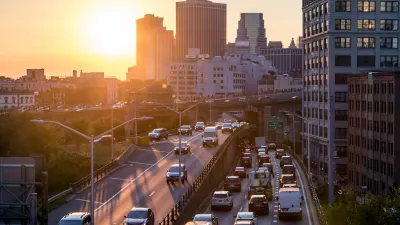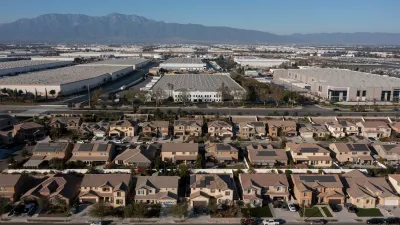A new study finds that sometimes closing roads can improve traffic flow by forcing people to make alternative choices to the shortest route.
"At first blush, this study seems dissonant with findings that traffic flows can be improved by increasing vehicular anarchy. As I noted a few months back, there is considerable evidence that removing all traffic controls – lights, signs, road markings, and even the distinction between streets and sidewalks – can actually make traffic move more smoothly, as well as cut down on the number of accidents and increase the area's economic vitality. The idea behind these "shared streets," which have been successfully deployed in many European cities, is that the lack of traffic signs makes you take personal responsibility for directly negotiating with the pedestrians, cyclists, and other cars around you, instead of, say, gunning it through an intersection just because you know you have the light.
But maybe these two traffic models have more in common than it first seems. Both encourage individuals to drive more slowly so that everyone gets to his destinations faster. Both favor a holistic approach to traffic, one that designs from the perspective of the overall flow rather than that of an individual driver. And both open up more space for pedestrians."
FULL STORY: Does closing roads cut delays?

Trump Administration Could Effectively End Housing Voucher Program
Federal officials are eyeing major cuts to the Section 8 program that helps millions of low-income households pay rent.

Planetizen Federal Action Tracker
A weekly monitor of how Trump’s orders and actions are impacting planners and planning in America.

Ken Jennings Launches Transit Web Series
The Jeopardy champ wants you to ride public transit.

Rebuilding Smarter: How LA County Is Guiding Fire-Ravaged Communities Toward Resilience
Los Angeles County is leading a coordinated effort to help fire-impacted communities rebuild with resilience by providing recovery resources, promoting fire-wise design, and aligning reconstruction with broader sustainability and climate goals.

When Borders Blur: Regional Collaboration in Action
As regional challenges outgrow city boundaries, “When Borders Blur” explores how cross-jurisdictional collaboration can drive smarter, more resilient urban planning, sharing real-world lessons from thriving partnerships across North America.

Philadelphia Is Expanding its Network of Roundabouts
Roundabouts are widely shown to decrease traffic speed, reduce congestion, and improve efficiency.
Urban Design for Planners 1: Software Tools
This six-course series explores essential urban design concepts using open source software and equips planners with the tools they need to participate fully in the urban design process.
Planning for Universal Design
Learn the tools for implementing Universal Design in planning regulations.
Ada County Highway District
Clanton & Associates, Inc.
Jessamine County Fiscal Court
Institute for Housing and Urban Development Studies (IHS)
City of Grandview
Harvard GSD Executive Education
Toledo-Lucas County Plan Commissions
Salt Lake City
NYU Wagner Graduate School of Public Service





























